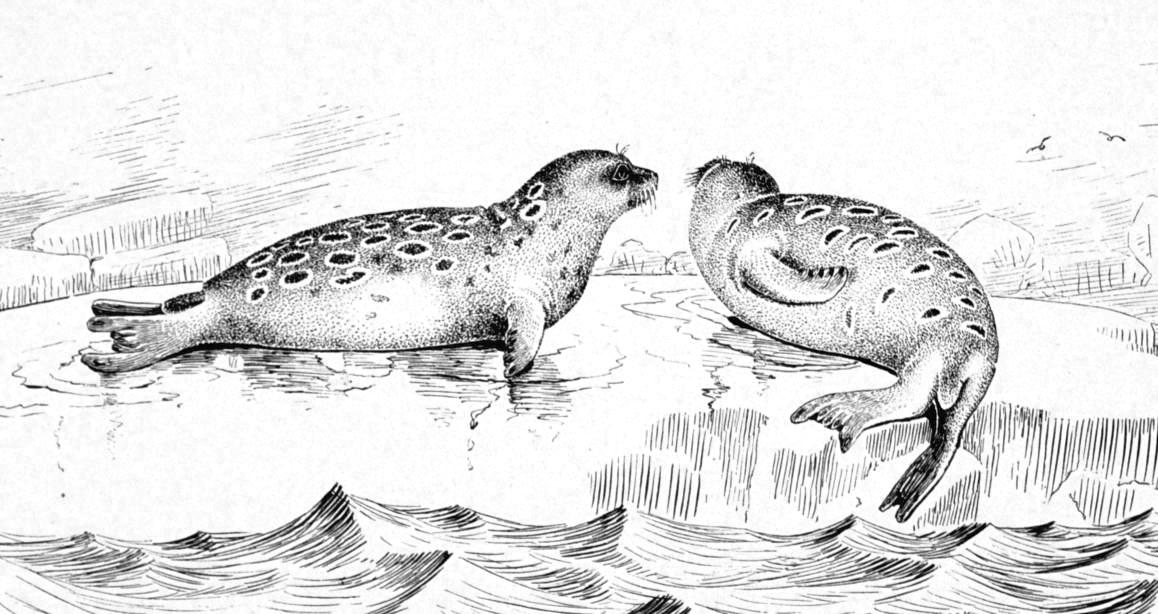Ringed Seal (Pusa hispida) - Wiki Ringed Seal
From Wikipedia, the free encyclopedia
[Photo] Phoca hispida (syn. Phoca foetida). From "The Fisheries and Fisheries Industries of the United States", by George Brown Goode (1887). http://www.photolib.noaa.gov/historic/nmfs/figb0273.htm
The Ringed Seal or Jar Seal (Pusa hispida formerly Phoca hispida) is an earless seal inhabiting the northern coasts. Also referred to by the Inuit as the Netsik or nattiq, typical adults are 85 to 160 cm long and 40 to 90 kg. They are quite long-lived seals, up to 45 years of age. Estimates of its population range around the 2-3 million mark. There are about 650000 ringed seals in Canada. The ringed seal are the only pinnipeds that maintain a breathing hole in the ice thus allowing it to use ice habitat that other seals can not.
Females reach maturity at 5-7 years while males reach sexual maturity from usually at 6-8 years old. Seal pups are born from mid March to early April. Gestation period is approximately 9 months. Seal pups depend on maternal care for 40 days and build up a thick layer of blubber. Due to the effects of global warming, icepacks have begun breaking up earlier than in the past. Birthing lairs are often destroyed before the seal pup is able to forage on its own leading to poor body condition.
The coat is a light grey spotted with black; the spots often being surrounded with lighter ring markings, from which this seal gets its vernacular name.
The populations living in different areas have evolved to separate subspecies, which are:
- Pusa hispida hispida: Arctic coasts of Europe, Russia, Canada and Alaska, including Novaya Zemlya, Spitsbergen, Greenland and Baffin Island.
- Pusa hispida krascheninikovi: North Bering Sea
- Pusa hispida ochotensis: Kamchatka, Okhotsk Sea and southward to 35°N, along the Japanese Pacific coast.
- Pusa hispida botnica Baltic Sea, Gulf of Bothnia and Gulf of Finland
- Pusa hispida ladogensis (Ladoga Seal) Lake Ladoga
- Pusa hispida saimensis (Saimaa Ringed Seal, saimaannorppa). Lives only in Lake Saimaa in Finland and is one of the most threatened seals in the world with total population around 250 individuals.
The three last subspecies are isolated from the others, like the closely related Nerpa (Baikal Seal).
Economic Importance
Examination of Early Paleoeskimo sites in Arctic Canada has demonstrated the deliberate hunting of juvenile and young adult ringed seals, probably in the fall and winter from frozen cracks and leads in the ice (Murray, 2005).
http://en.wikipedia.org/wiki/Ringed_Seal
| The text in this page is based on the copyrighted Wikipedia article shown in above URL. It is used under the GNU Free Documentation License. You may redistribute it, verbatim or modified, providing that you comply with the terms of the GFDL. |
